Violets Optimara: varieties and care
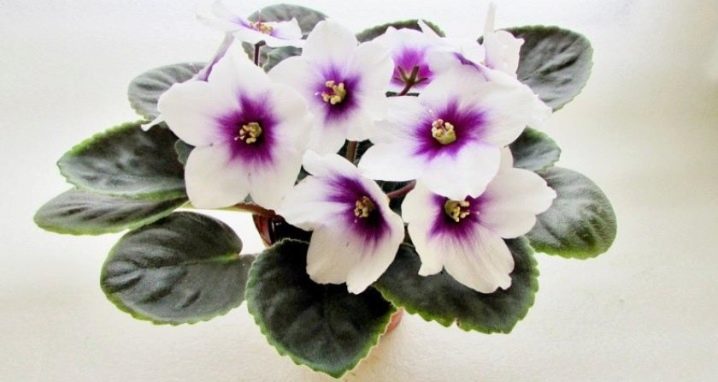
Having flowers at home is not only beautiful, but also good for your health. Each grower himself chooses his favorite plants for growing in indoor conditions. Most often, you can find violets in the room, the variety of varieties of which can amaze even the most sophisticated grower. In order to find flowers for yourself, grow them and properly care for them, you must have a complete knowledge of each of the Optimara varieties.
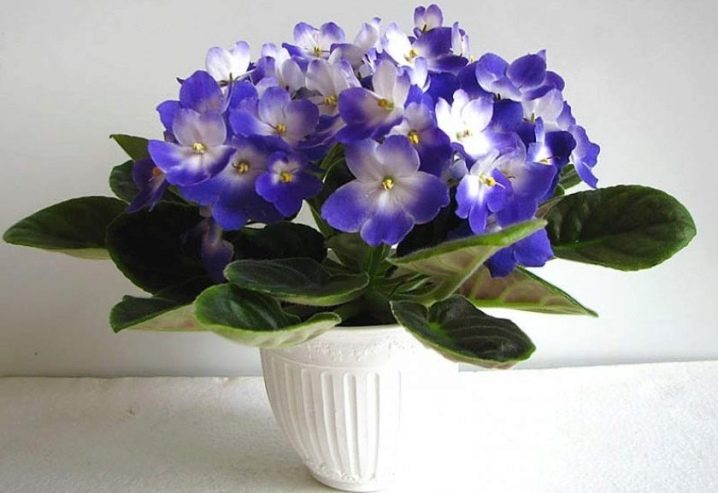
Description
Very often in everyday life there are such plants, the name of which does not quite correspond to their original name. So, the violet, which can be seen on the windows by most, is actually called saintpaulia. These are plants that have a beautiful shade and belong to the Gesneriev family. The most common variant of such a flower is the uzambara violet, which can be easily purchased and grown at home.
Saintpaulia is native to East Africa and can often be found near rivers and water bodies, in places where the soil is well moist. The flower was found in 1892 by Baron Walter von Saint-Paul, who collected the seeds of the plant and brought it home with him to Germany. It was in his honor that the culture began to be called saintpaulia. Since 1893, this plant has been actively featured at exhibitions in Germany, from where it spread throughout the world.
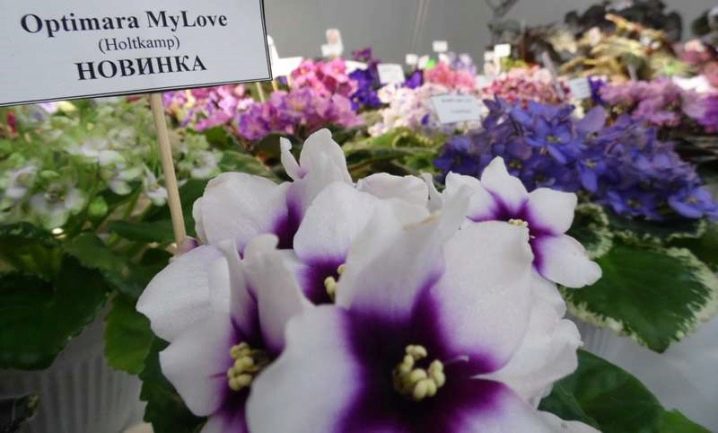
Due to the great interest in this plant, today you can count more than 32 thousand varieties, two of which are a product of domestic floriculture. Saintpaulia is an evergreen perennial flower with a short stem, the leaves of which grow from the root. The foliage can be solid or blotchy. A distinctive feature is the presence of villi and the rounded shape of the leaves, reminiscent of a heart. As for the flowers, they consist of 5 petals, which are collected in a brush. Inside there are 2 stamens and 1 pistil with an upper ovary, as well as 2 carpels.
Saintpaulia seeds are in a capsule and are small round grains with a straight embryo. There is an option for planting violets with leaves, which are cut off from the main bush and placed in the water until the roots appear, after which you can plant them in the ground. It is worth taking the soil purchased for Saintpaulia or mixing leaf, sod, coniferous and peat soil in a ratio of 3: 2: 1: 1. In order for the violets to grow well, it is important to make the soil loose, for which you cannot do without disintegrants: perlite, vermiculite, river sand and sphagnum. For good growth and flowering, it is necessary to water the flowers, preventing the soil from drying out too much and not filling the pot in order to prevent root rot or the appearance of diseases.
The correct conditions of detention, comfortable temperature and humidity, the presence of a sufficient amount of light, all this will make it possible for Saintpaulia or violet, as it is more often called, to grow well and delight with long flowering.
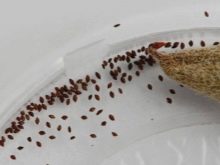


History of appearance and distribution
Violets are a cute and pleasant flower, so it is not surprising that many biologists have shown interest in them. The year 1989 was marked by the breeding of Saintpaulia varieties with peduncles of different colors, since before that only a purple hue was known to bloom. As soon as it was possible to understand how you can influence the color gamut, scientists took up the size of violets, experimenting with it and creating varieties with miniature or huge petals. Breeding experiments could not go unnoticed. They soon developed to a more serious level.
Many lovers of such beautiful plants as violets have noticed in flower shops and on the websites of a representative of the flower world called Optimar violets.a. They are not some kind of separate species of Saintpaulia, just a company with that name is engaged in their cultivation. These flowers are considered the most striking representatives of tropical plants, but, unlike the simpler species, they can please with flowering only once. Optimara Saintpaulias do not like cold very much, any of its effects leads to a complete stop of the flowering process, and can also inflict a crushing blow on the root system, which should only be kept warm. Despite all their beauty, African violet forts do not grow long, they should not be planted.
In order to somehow extend the life of the bush, you can germinate cuttings.
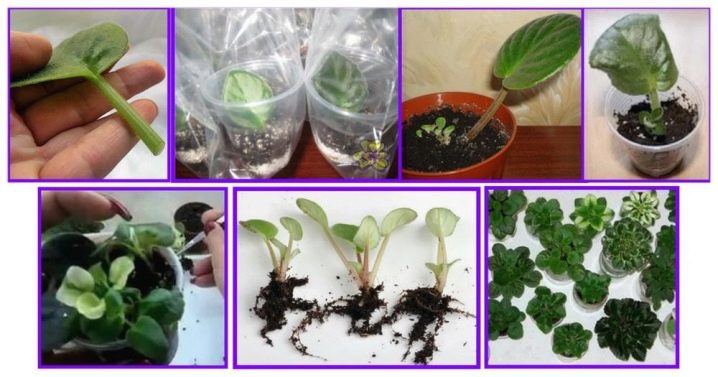
You can buy Optimara violets in the form of a small bouquet, which is often sold in pots. This plant can bloom only 1 time, after which it makes no sense to take care of it anymore. Saintpaulias of this company grow rapidly and bloom all at the same time. The main advantage is the abundance of beautiful symmetrical buds on one violet. Such plants are bred for industrial purposes, so they are easy to transport, they do not deteriorate on the way.
Bright flowers, various shades are the hallmark of Optimara violets, so the interest in them remains consistently high. A lot of time has passed since the appearance of this brand, because the official time of birth is considered to be 1930, when M. Dorrenbach in Germany switched from his business of breeding and growing grain crops to Saintpaulia. The co-owner of Holtkam saw global perspectives in such a small and simple flower and was able to achieve his goals. His son, Reinholt, made a great contribution to the development, who helped to make the modest family business a huge and well-known company all over the world. The first attempts to create a beautiful flower for sale were few, the plantations did not exceed 1 square meter, but thanks to the success, all the plants of the greenhouse were soon replaced by the Uzambara Saintpaulia.
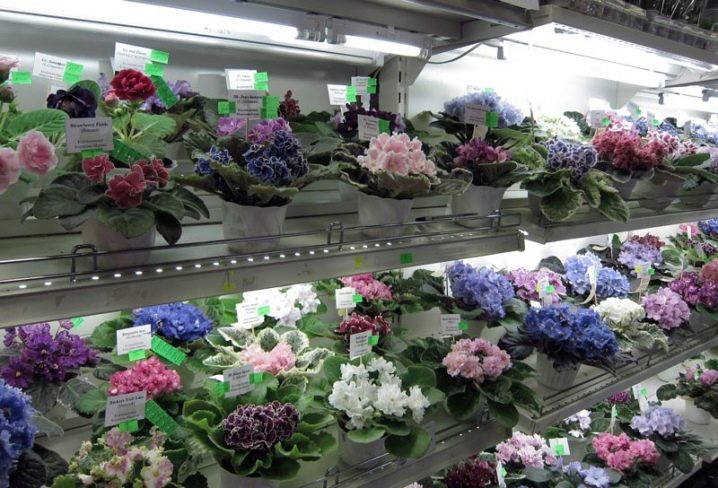
Optimara's main goal is to develop a large number of varieties that are constantly being replenished. Already, there are several hundred varieties of these colors, which are posted on the company's website, often they do not even have their own name. Usually a number is assigned to a new violet, but the name of the breeder who bred it must be indicated. In production, they do not set the task of approving or cultivating a particular variety, even if customers like it. Optimara's main rule is to have the widest range of products.
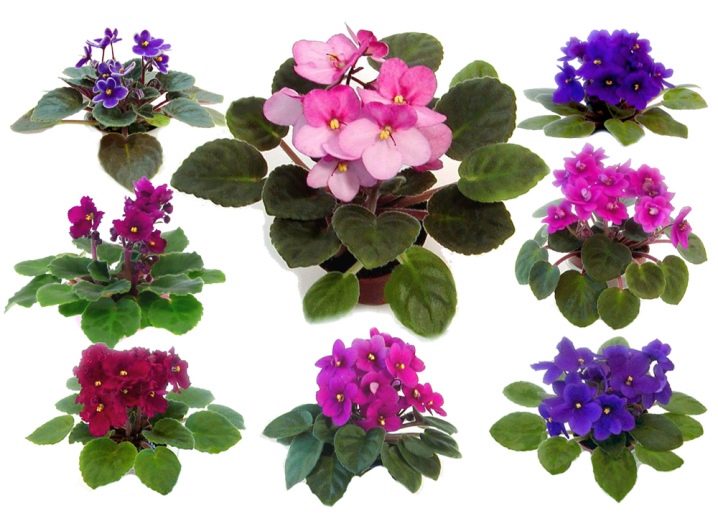
Varieties
Since Optimara violets have gained worldwide fame, it is worth talking in more detail about those varieties which are considered the most significant and beloved among fans.
- Optimara my love - Saintpaulia with light green, even foliage with red veins on the back and white flowers, the middle of which is deep purple. The appearance of Saintpaulias can differ seasonally - in winter the violet is white with a small purple spot, and in summer it becomes almost completely purple, leaving only a white edging. The rosette of the violet is neat, the peduncles have an erect structure and bloom profusely.
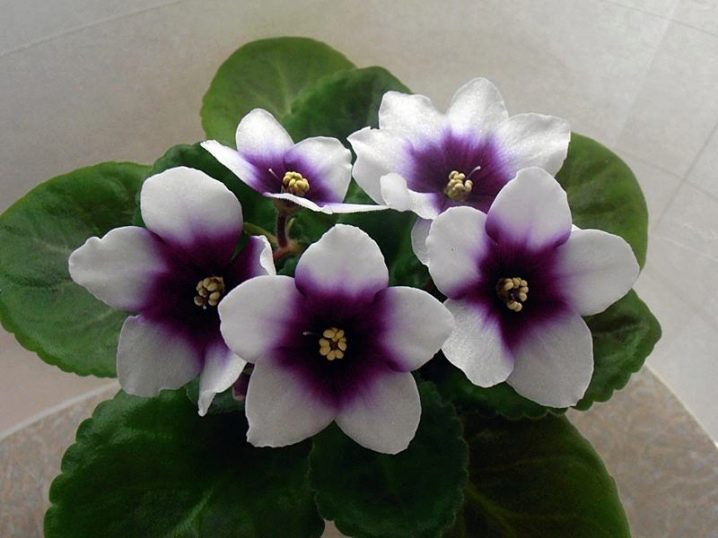
- Little moonstone - a variety with charming white flowers, the middle of which is painted in a blue tint. The leaves are pubescent, the color is light green, the structure of the edging is serrated. The petioles are long and thin. The peculiarity of the variety is that in cold weather, white petals and buds become partially light green. The flower stalks grow quite long, while maintaining a significant weight on themselves, since this Saintpaulia blooms very profusely. The opening of the bud occurs slowly, from small flowers after a while chic double flowers are obtained.The advantage of the variety is the long flowering period, which can last more than a month.
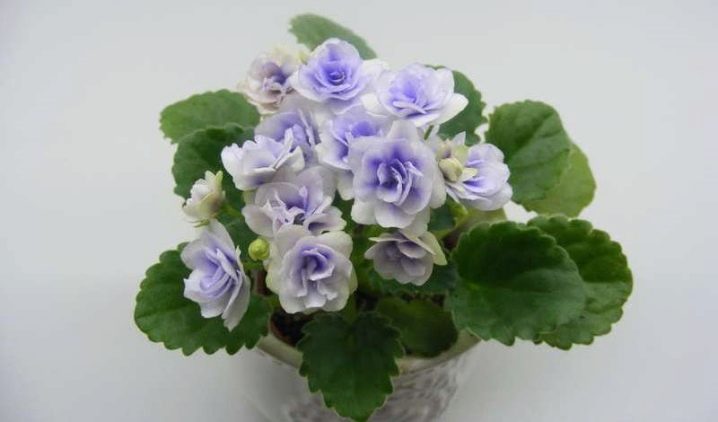
- My dream - a very attractive and delicate variety with large, cupped white flowers with a blue-violet center, which can reach 7 centimeters in diameter. Peduncles are distinguished by their short length and the presence of 2 to 4 flowers on them, which delight the eye for a long time. The leaves have a simple shape and an ordinary green tint, and on the seamy side the tint changes to red. Quilted foliage forms an even rosette due to the horizontal direction of growth, which makes the colored cap stand out even more, making it possible to enjoy their beauty.

- Chagall - the variety is represented by semi-double peduncles with dark blue-violet flowers and a white center. The leaves are medium-sized, pubescent, of a simple structure, the main color is green, and from the inside they have a red tint. The external resemblance to "Pansies" is very great.
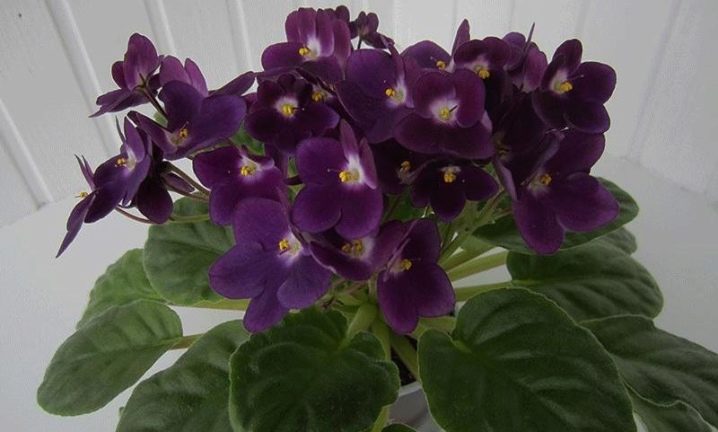
- Millennia - a charming variety, the flowers of which are two-colored, two petals are white, and three have a crimson spot in the middle. The originality of the flower is given by the double shape of the edges. Lush buds bloom in large numbers. The rosette is compact, the leaves grow in a pyramid. The color of the leaves is deep green, the underside is red, their size is small, and the shape is original and beautiful.
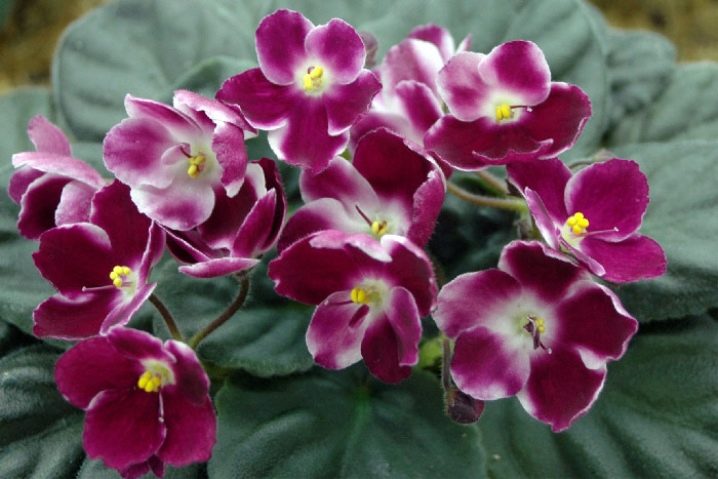
- Ever Grace - the original representative of Saintpaulias, distinguished by the variety of colors in one flower. Petals can have from 2 to 3 shades, often the main color is bluish-purple, but white color can also be found, and the edges are outlined with a light green frill, which makes the variety distinguishable from all others. The foliage is green, terry, has a wavy structure and a heart-shaped shape.
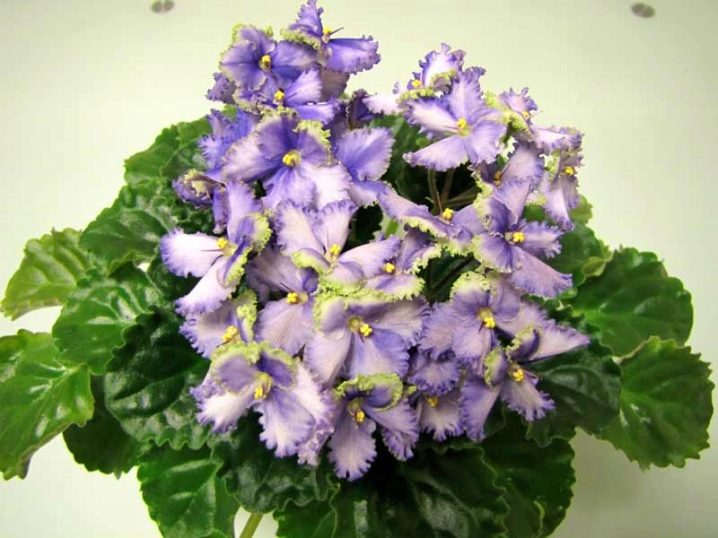
- Ever Precious - Saintpaulias with simple semi-double flowers of white color, having a bluish-violet edge, a purple border on the three lower petals, and a salad on the two upper petals. Leaves are glossy, simple, semi-double, slightly wavy.
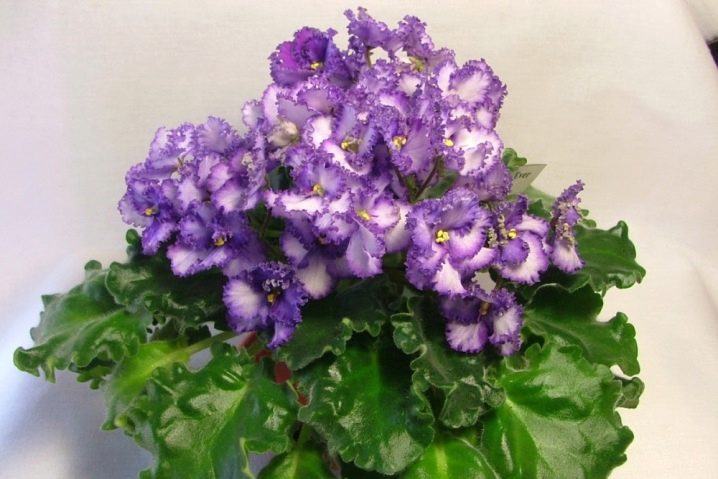
- My desire - violet with white flowers with a bright pink spot in the center. Leaves are green, heart-shaped, jagged edges. The socket is neat, standard.
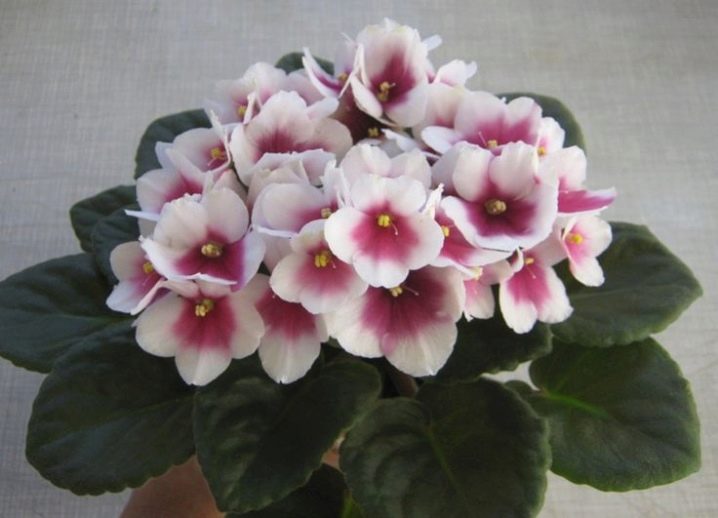
- My passion - flowers are white with a pink-purple center, resemble stars in shape, are quite large in size, within 5 cm in diameter. The rosette is neat, but the leaves are large, resembling burdocks. The foliage is tough but fragile and breaks easily when pressed. Peduncles are distinguished by good durability.
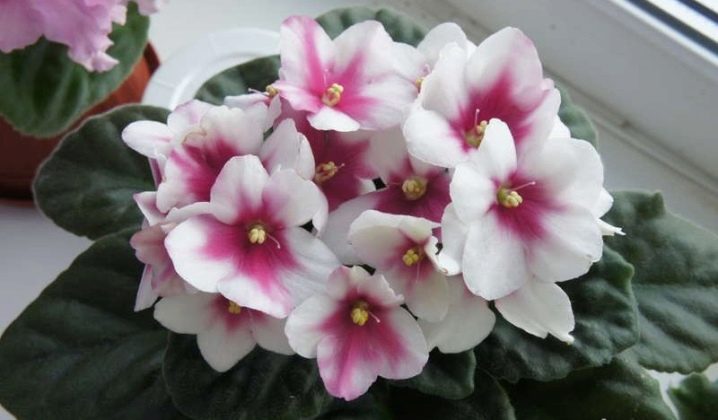
- Little crystal - this variety is a violet with snow-white semi-double flowers. The foliage is light green, heart-shaped, compact in size. The petioles have a thin structure, they are light green, and on the back side they are silvery. It blooms well and luxuriantly, peduncles are tall, numerous.
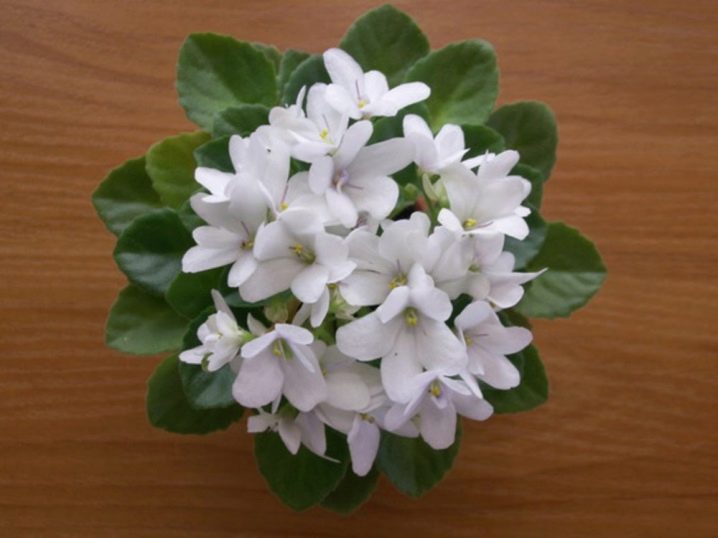
- Nebraska has simple, semi-double purple petals, framed by a wide white wavy border, which creates an amazingly beautiful color contrast. The dark green leaves have a simple shiny structure. The buds are pleasing to the eye for a long time.
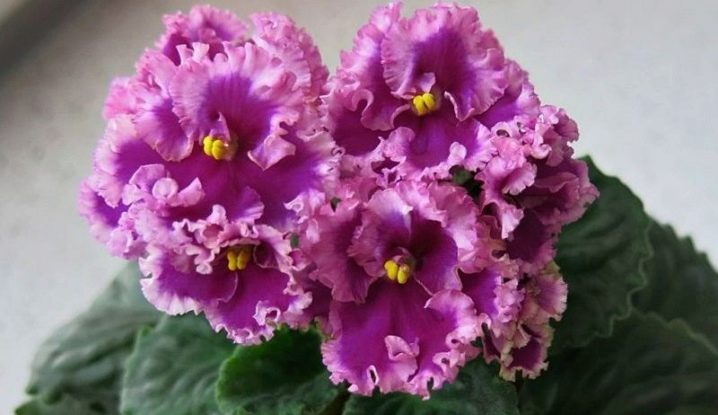
- Annabelle blooms with beautiful blue-violet flowers resembling bells. The size of the flowers is small, but thanks to the original color and a fairly large number, this variety of Saintpaulia looks very impressive. The leaves are dark green, simple, semi-double, heart-shaped.
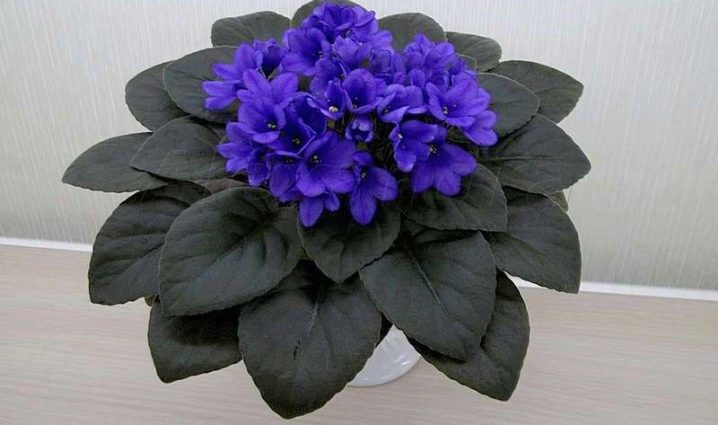
- Rita blooms with simple white flowers with bright purple lower petals. The edges of the flowers are wavy. The leaves are green, rounded, forming a neat and small rosette.
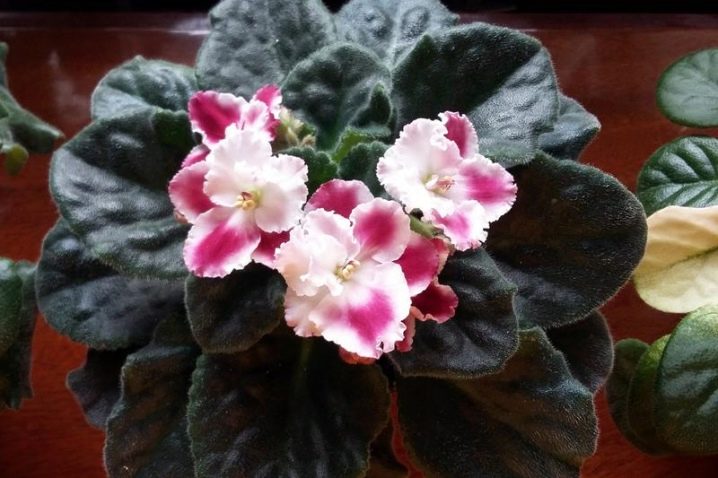
- Dali represents crimson stars-flowers with a white center. It blooms well and abundantly. Leaves are light green, semi-double, compact rosette.
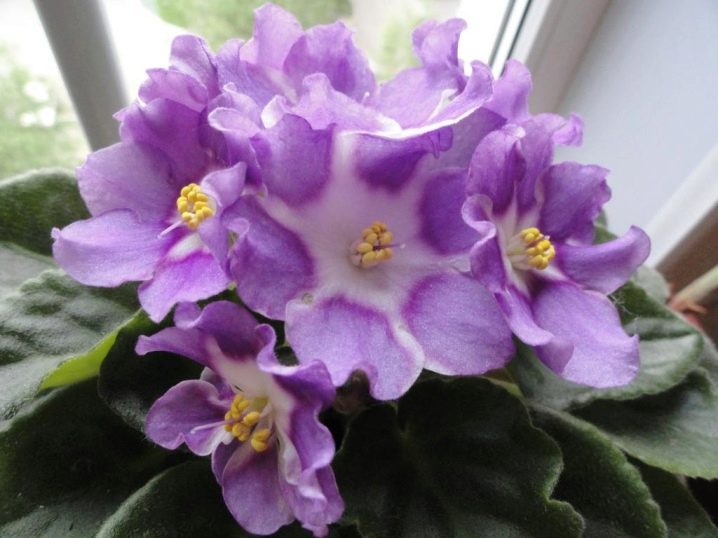
- My joy - flowering occurs with white flowers with a blue core. The flower stalks are strong due to the abundant flowering of the variety. The leaves are green, semi-double, small in size. The outlet is small and neat.
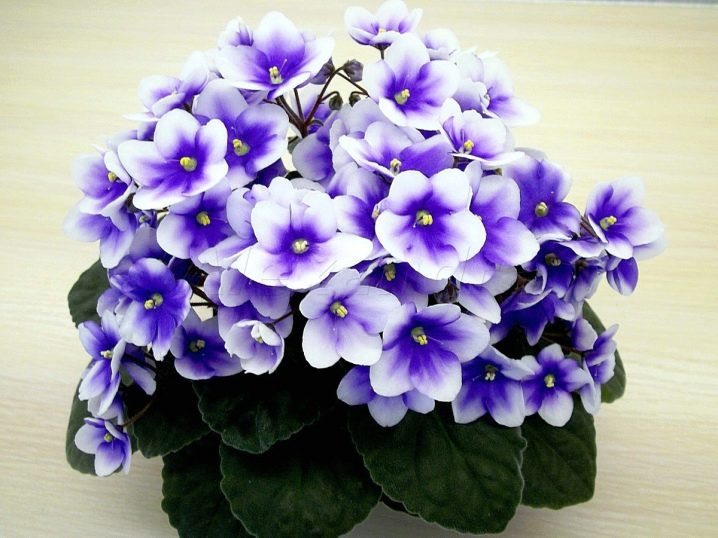
- Kansas has white semi-double petals with a pink-red center, presented in the form of an asterisk. The leaves are simple, shiny, semi-double, green on the outside and red on the wrong side.
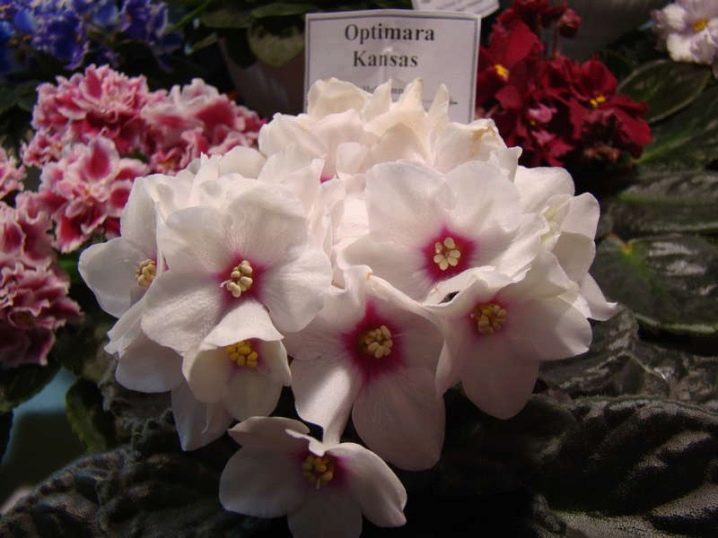
- Little emerald has dense white flowers, shaped like stars, with a deep pink center. The foliage is round, light green, with jagged edges. The rosette is small, the variety is miniature.
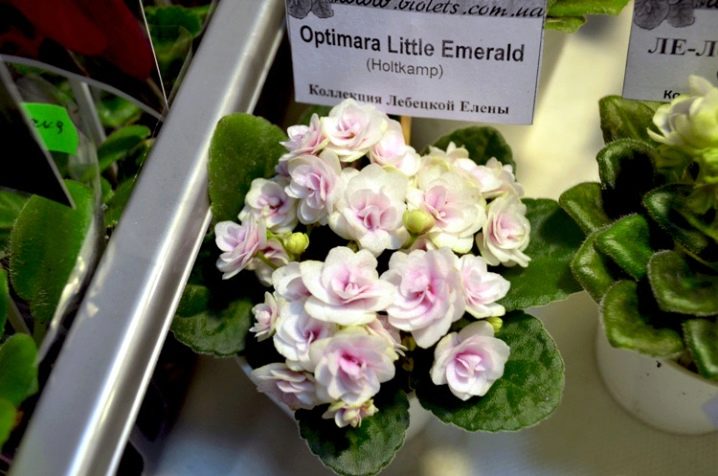
- Michelangelo blooms with simple white flowers with a blue-violet center. The foliage is green, terry, has a flat shape and a pointed edge, jagged edging.

- Hiroshige - flowers are simple, white with a light blue shade of petals. The foliage is green, double, heart-shaped. The socket is flat.
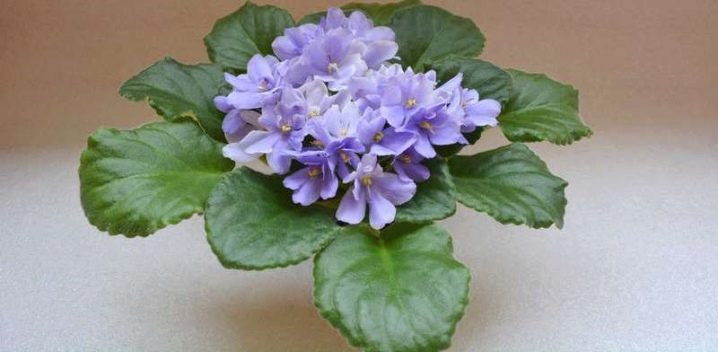
- My charm has simple white petals centered with a dark purple eye. It blooms profusely, has strong peduncles. The foliage is simple, green, rounded.

- Trinidad blooms with double light lavender flowers, which have a more saturated color around the edges. Darkening of the main tone can be observed either on the upper petals, or on all the outer ones, since the inner petals remain lightened. The foliage is dark green with a pointed shape. The rosette is neat, the peduncles are strong, and the flowering is abundant and long.
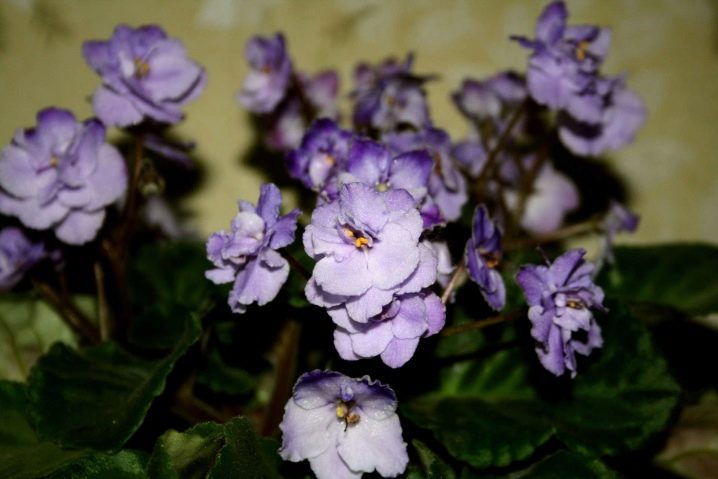
- Little inca - flowers are simple with a deep blue color. Blooms profusely and for a long time. The leaves have a light green hue, an elongated and pointed shape, a glossy terry structure and jagged edges.
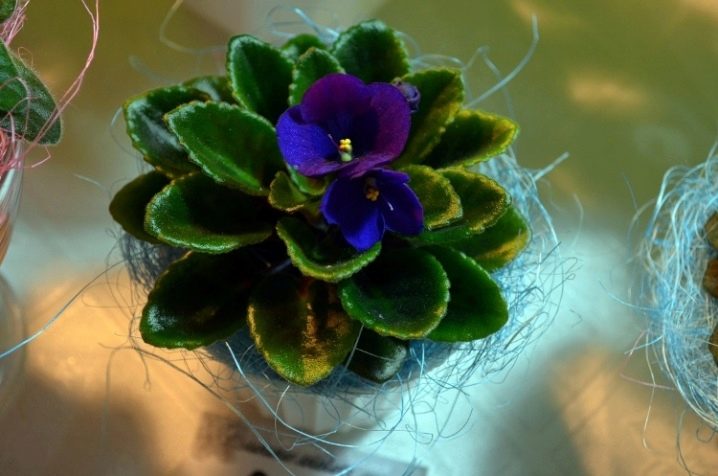
- Little ottawa - violets have a dense double structure and a dark pink hue. The leaves are medium-sized, have a wavy structure, the color is dark green, the seamy side is red, rounded, with jagged edges. The bloom is very lush due to the large number of small flowers, shaped like stars. In cold conditions, violets may develop a lettuce edging. Flowering occurs slowly due to the unhurried opening of the buds, so you can enjoy the beauty of the violet for more than 1–2 months.
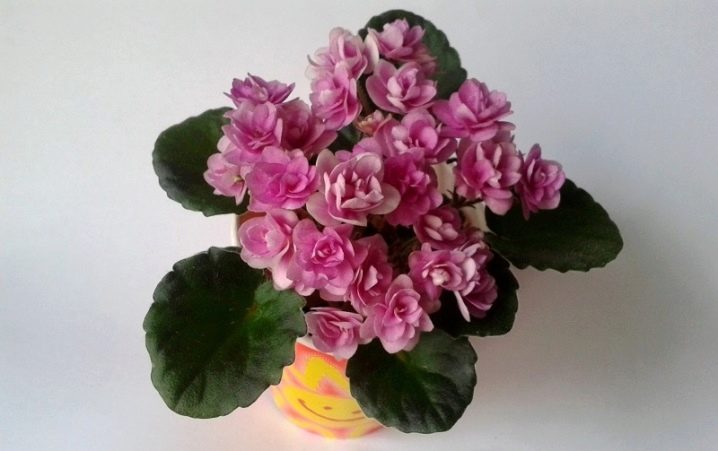
- Little oneida has large beautiful white flowers with a bright pink edging, the diameter of which is about 5 cm. The rosette is small, the leaves are light green with a wavy edge. It grows quickly and begins to bloom early.
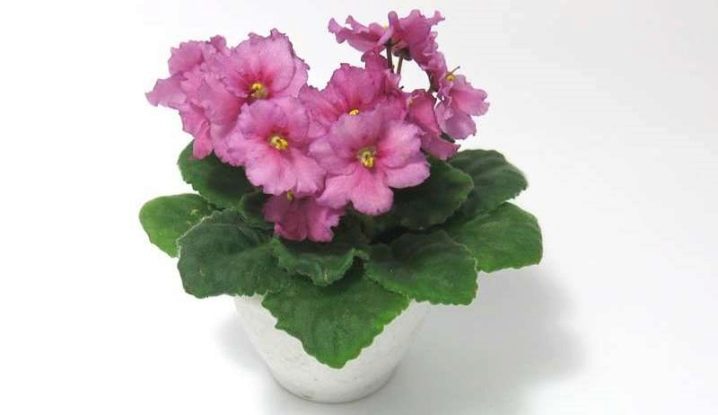
- Ever Glory - the variety has simple flowers of dark pink color along the edges with a green edging. The rosette is small, bouquet bloom, long-lasting. Leaves are green, wavy.
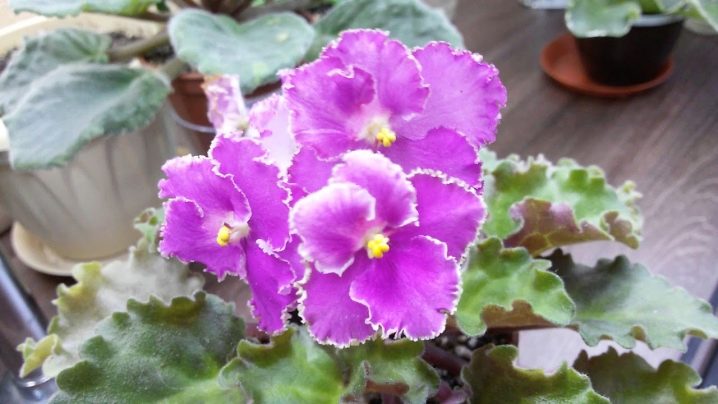
- Monet - beautiful Saintpaulias with simple white petals and blue-violet edges. The foliage is green, terry, has a pointed shape, a jagged edge. The rosette is compact, abundant flowering.
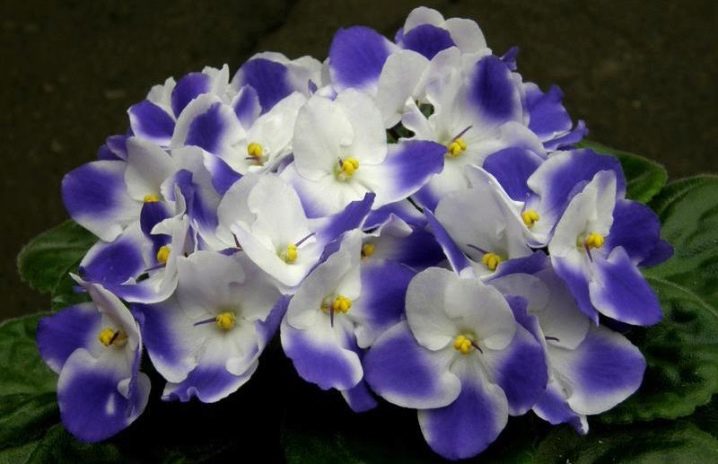
- Michigan - a variety with delicate, light pink flowers. The foliage is green, semi-double structure, with a red seamy side. The rosette is compact, flowering is lush, abundant.
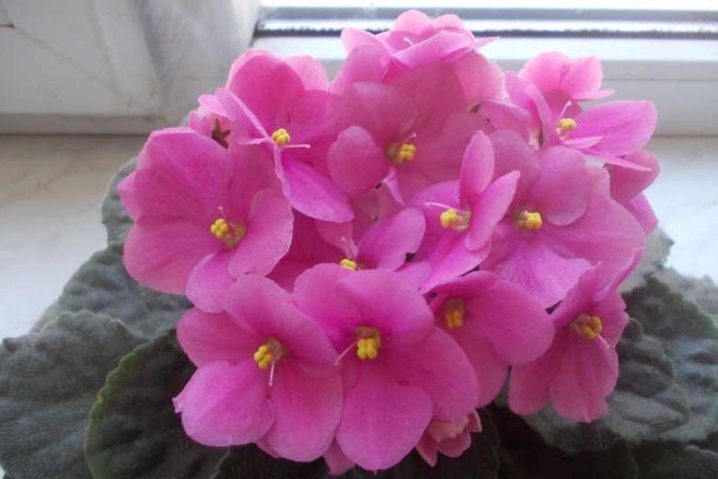
- Isabelle - the variety has pale pink flowers. The foliage is dark green, semi-double, elongated. The rosette is not very large, the flowering is abundant.
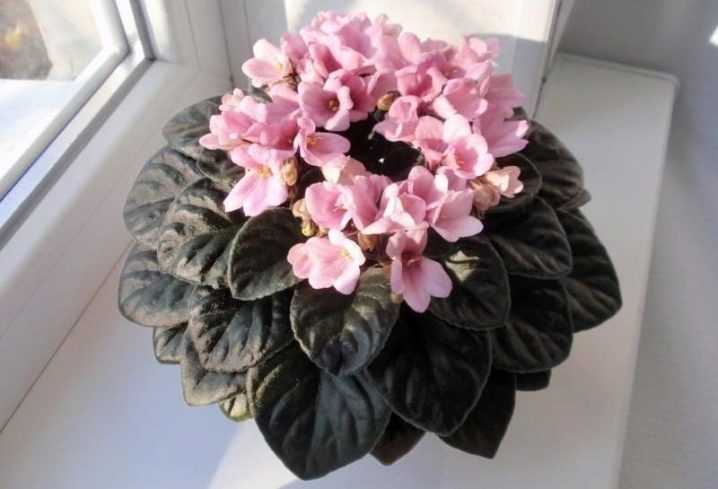
These are the most popular Optimara violets seen on sale. In view of the large selection, it is possible to choose exactly what will be to your liking, and having decided, you need to know how to grow flowers correctly.
Conditions for keeping
In order for Saintpaulias to grow at home and please with lush and frequent flowering, you need to create the proper living conditions for them. The light should be moderate, rather bright, if possible, exclude direct sunlight. For full growth, a flower needs lighting within 10-14 hours a day. Plants with dark leaves need more light than light ones. The soil in the pots should be slightly damp, a slight dryness near the roots will stimulate the plant to bloom. Do not allow drafts or sudden temperature changes.
Violets are considered heat-loving plants, so a range of + 20– + 25 would be considered optimal. Crushed flowers, dull color, lack of varietal distinctive features can be considered signs of overheating.The air humidity should be quite high, in the range of 50-60%, so you can use a humidifier or a pan with water.
The main thing is to protect the roots from interacting with moisture. Violets should not be sprayed, as the hairy structure of the leaf will retain moisture, which can provoke the development of a fungal disease.
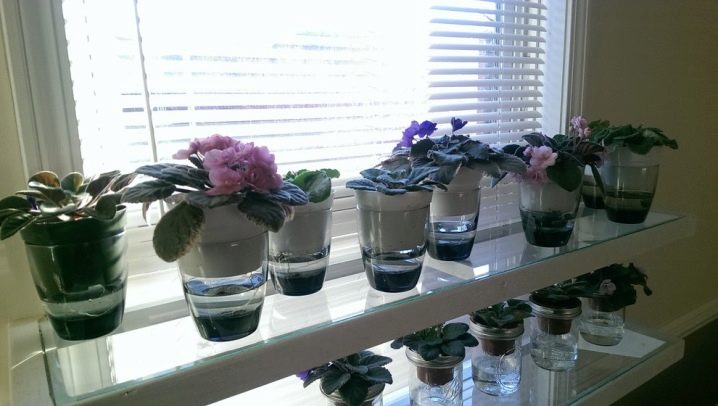
It is best to place the pot on the west or east window to give the required amount of light. For uniform development of leaves, it is necessary to turn the bush a little after each watering. In the absence of proper lighting, you need to install special lamps that will give the red and blue spectra, which are necessary for the violet. The optimal distance from the lamp to the plant is half a meter.
For full-fledged growth, you cannot do without top dressing. Violets need fertilizers with a high phosphorus content. It is best to add fertilizer after the watering procedure. When choosing the most suitable products, you need to make sure that they dissolve in water, since this is how the violet consumes nutrients.
It is necessary to apply fertilizers when the flower changes its appearance, begins to fade or the color becomes shallow.

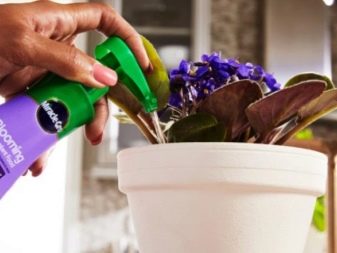
The subtleties of growing
Grow Saintpaulia with the following options:
- using seeds;
- petioles;
- thanks to the division of the bush;
- using peduncles;
- leaves without petioles;
- using an outlet;
- using pinning.
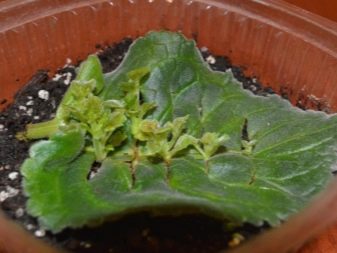
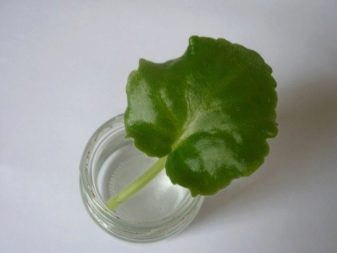
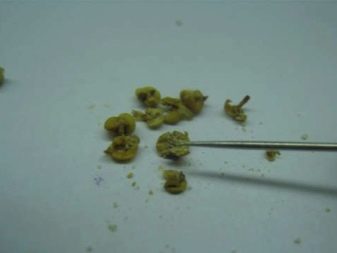
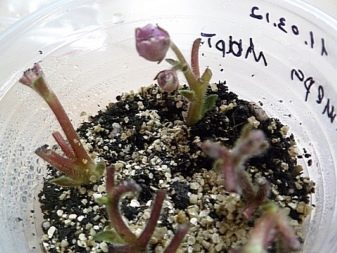
Growing a violet from seeds is difficult, so this option is rarely used. When propagating by cuttings, it is worth using a leaf with a short cut.
It is logical to divide the bush in the case of its strong growth in the pot. The rosette option is used in case of plant rejuvenation. The use of a peduncle is necessary when the violet has forte features that disappear with other methods of reproduction, in the same case, you can use the pinching option.
Planting violets is best planned for spring or summer, when it is possible to provide the plant with bright and long-lasting lighting. The soil should be used loose, with a low level of acidity and an abundance of nutrients. The choice of pot will also be an important factor. It must be small in order for the root system to form correctly. Depending on the size of the bush, the dimensions of the growing container also change.
The planting process must be carried out carefully, it is necessary to place the bush exactly in the center of the pot, which will enable the roots to grow evenly on the sides. The lower leaves should be near the soil, and with proper growth, they are only halfway outside the pot.
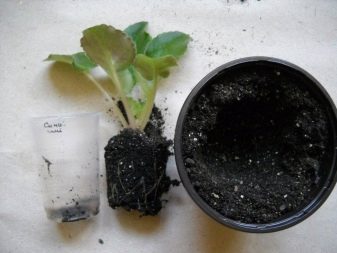
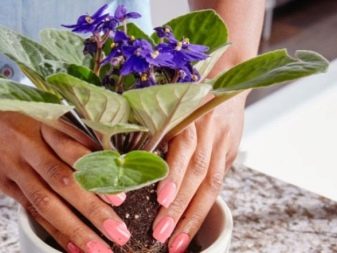
Knowing how to properly grow a bush, plant or transplant it, you can safely cultivate Saintpaulias at home.
See the following video for Optimara Rhapsodie Clementine.































The comment was sent successfully.